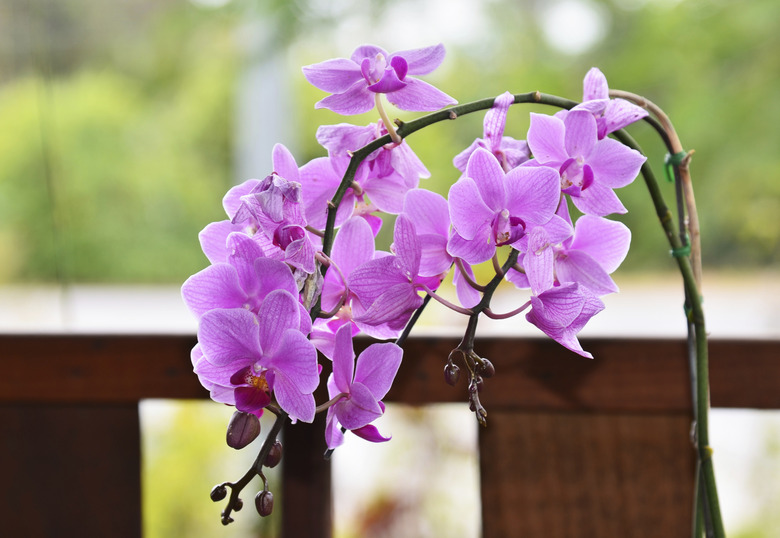How To Propagate Phalaenopsis Orchids
We may receive a commission on purchases made from links.
When you propagate phalaenopsis orchids, you can spread the beauty and more plants to fill your home. The moth orchid (Phalaenopsis [group], USDA hardiness zones 10-12), a favorite for beginners, is considered easy to grow. Home orchid enthusiasts typically propagate it by transplanting one of its naturally occurring offsets or plantlets, also called keikis, that grow on nodes along its flowering spike, or stem. This is a form of division. Propagating it by seed or by tissue culture is better left to commercial growers, as it requires special laboratory equipment.
Moth Orchid Basics
Moth Orchid Basics
Moth orchids grow from 6 inches to 3 feet tall, spreading from 8 to 12 inches wide, and they flower year-round. Even though they only grow outdoors year-round as perennials in U.S. Department of Agriculture plant hardiness zones 10 through 12, they're commonly grown as indoor plants. Moth orchids are epiphytic, meaning they grow on branches and trees but are not parasitic. Their roots take in nourishment from the air and water, not their host. Sphagnum moss and medium-sized chunks of fir bark are their preferred growing medium.
Growing Moth Orchid Keikis
Growing Moth Orchid Keikis
Keiki is the Hawaiian word for baby. To encourage the growth of keikis on a moth orchid spike, you'll need a keiki rooting hormone specially formulated to encourage the growth of orchid offshoots. You can buy it at most garden supply centers.
Sterilize a scalpel or sharp knife and tweezers by soaking them for five minutes in a solution of 1 part household bleach and 3 parts water. Let them air dry. Cut through the bract, or covering, of a bud growing at a node. Avoid cutting into the node. Use tweezers to pull the bract back, apply a little keiki rooting hormone, then close it. Follow manufacturer instructions for how much rooting hormone paste to use.
Planting the Keikis
Planting the Keikis
When a keiki develops several good roots about 3 inches long, sever it from the stem and plant it in its own pot. Set the pot on moist gravel, but don't let the bottom stand in water. Water to moisten the sphagnum or bark, then mist daily while the keiki becomes established.
Moth orchids like bright, indirect light. Place the newly planted keikis in a window that faces east or west with daytime temperatures between 66 and 86 degrees Fahrenheit during the day and 61 to 66 degrees at night.
Mist daily until the roots are firmly established in the potting mix, then water weekly or when the potting mix dries slightly. Don't water at night. Water in the morning with tepid water, and don't let the roots stand in the water or let water accumulate above the orchid's crown. Fertilize established moth orchids once a month using a product that's formulated for orchids, following all label directions for mixing rates and application frequency.
Growing Keikis in Sphagnum Moss
Growing Keikis in Sphagnum Moss
An alternate propagation technique is to cut into the bract of a node, apply keiki rooting hormone, and secure sphagnum moss around the keiki with a piece of nylon stocking. Leave the keiki on the spike, letting the roots grow into the sphagnum. When the keiki has matured and developed roots, sever the sphagnum from the spike and move it a pot containing more sphagnum moss.
Layering Orchid Keikis
Layering Orchid Keikis
A third technique for growing a phalaenopsis keiki offset is a variation of layering, the practice of bending a plant to the ground to grow roots. To layer a moth orchid, uncover and treat a node with keiki rooting hormone and bend its spike over until the keiki touches the sphagnum or bark compost in a pot, being careful not to break the stem as you bend it. Secure it in place. Still nurtured by the mother plant, the keiki will grow roots into the growing medium. When it is fully self-sufficient, sever the keiki from its mother.
